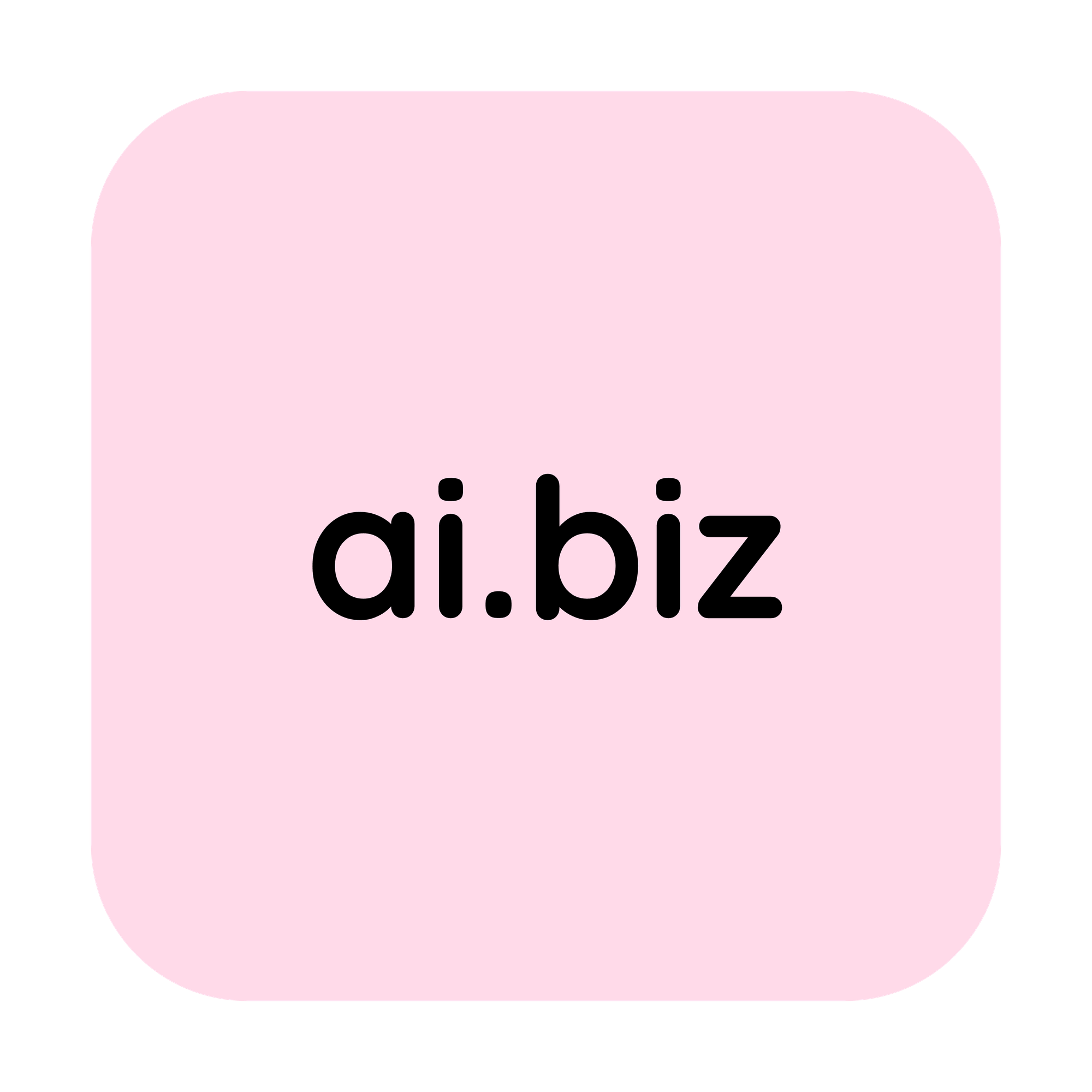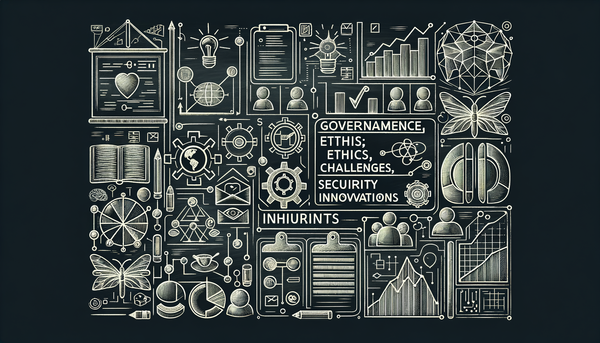Exciting AI Updates: Transformations Across Industries

Tempus AI battling NVIDIA in healthcare innovation, a browser that transforms your online world, and operating systems reinventing the user experience all signal an era where artificial intelligence redefines every industry. From energy-hungry data centers to AI-powered communication breakthroughs, the rapid evolution of intelligent systems is not only reshaping business, but also the way we interact, work, and play.
Revolutionizing Healthcare: Tempus AI vs. NVIDIA
The debate between specialized AI in healthcare and the brute computational power offered by tech giants is intensifying. Stellar efforts by companies like Tempus AI are pitted against heavyweights like NVIDIA to determine which approach truly brings smarter, tailored care solutions. While Tempus AI focuses on personalized, patient-specific data analysis, NVIDIA’s expansive platforms aim to scale processing capabilities to accommodate vast datasets across multiple medical fields.
Leveraging machine learning for diagnostics and predictive analysis, these innovations promise to reduce the waiting time for test results and improve the accuracy of treatments. Imagine a scenario in which a patient’s genomic data and medical history can be rapidly processed to suggest a customized therapeutic regimen. Such capabilities not only enhance clinical outcomes but also optimize resource allocation in healthcare facilities.
This transformative potential is clearly echoed in our detailed industry updates, where healthcare is one of the primary beneficiaries of AI’s cross-industry advancements.
Feeding the Beast: Big Tech’s Quest for AI Power
Data centers across the globe are bustling with activity as big tech organizations double down on powering AI's voracious appetite. An in-depth analysis by The Economist has spotlighted the enormous energy and computational requirements needed to sustain modern AI applications. Emerging trends indicate that tech giants are not only investing billions in hardware but also rethinking data center locations and cooling techniques to maintain efficiency.
The rapid scaling of AI has led companies to innovate in the energy sector as well, with research papers discussing the deployment of renewable energy sources and dynamic load-balancing algorithms that optimize power usage. This race to feed the insatiable demand for compute power is laying the groundwork for the next generation of AI technologies—and shaping policy debates on sustainability and environmental impact.
The juxtaposition of advanced hardware development with sustainable practices provides an interesting intersection for future regulatory frameworks and business strategies. For further insights, you might want to dive into the analysis from our recent podcasts that elaborate on these changes.
The Communication Conundrum: Beyond the Turing Test
Forget about the Turing Test for a moment—the real challenge today lies in how effectively artificial intelligence can communicate. Recent discussions in AI News have shifted focus toward nuanced linguistic capabilities and the subtleties of human conversation. AI systems are now being designed not merely as response engines, but as empathetic and context-aware communicators that adapt their language based on the situational context.
This evolution is critical, especially when AI is deployed in customer service, education, and mental health support. Researchers are exploring how the infusion of sentiment analysis and contextual memory into chatbots can improve engagement and build trust with users. The ability to not only answer queries but also understand user emotions marks an important milestone in AI research.
As Catherynne M. Valente once vividly expressed,
I can communicate in 6,909 living and dead languages. I can have more than fifteen billion simultaneous conversations, and be fully engaged in every single one. Yet even so, there are unthinkable moments where I can find no words, in any language, living or dead.
This quote encapsulates the challenge faced by developers striving to bridge the gap between artificial responsiveness and genuine human-like empathy.
Optimizing Supply Chains with AI
Supply chain management has long been a complex ballet of logistics, forecasting, and sudden market changes. Thanks to innovative platforms like those described in Kinaxis’ exploration of AI in supply chain management, the integration of real-time data analytics and automated decision-making processes is making these operations significantly more efficient.
The use of AI helps companies track every component of their supply chain, from raw materials to final delivery, ensuring minimal delays and waste. Algorithms analyze patterns, predict disruptions, and allocate resources dynamically to keep the system running smoothly. This transformation is particularly remarkable in industries where time and precision are critical, such as automotive manufacturing and retail logistics.
More discussions on AI’s transformative role in interactions and processes are available on our latest podcasts that delve into both the technical and regulatory nuances involved.
Enhancing the Digital Experience: The AI-Powered Browser
One of the most exciting developments in everyday technology is the integration of AI directly into our web browsers. Microsoft Edge’s new Copilot Mode, as detailed by TechCrunch, represents a paradigm shift in how we navigate the digital realm. Imagine a browser that serves as your personal assistant, intuitively understanding and anticipating your needs—whether that means finding plant-based recipe alternatives or coordinating your travels.
This digital co-pilot is designed to be more than just a helper. It can review open tabs to provide a consolidated view for better decision-making and product comparisons. It can even use voice inputs, lending accessibility to users who may face mobility challenges or are less comfortable with traditional interfaces. In practical terms, this means that routine tasks such as booking a flight or drafting a quick email become smoother and more integrated into your daily workflow.
Nonetheless, despite these impressive capabilities, privacy remains a topic of concern. The balance between helpful personalization and data confidentiality must be navigated carefully. Microsoft's transparent approach, which includes visual cues and explicit permissions, is a step in the right direction, but users remain rightfully cautious.
Reinventing User Interfaces: Apple's iOS 26 Evolution
At the heart of technological evolution is the user experience—and Apple's latest public beta for iOS 26 is a compelling demonstration of that ethos. Dubbed "Liquid Glass," the redesign introduces a visually striking and intuitive interface that breathes fresh air into a familiar ecosystem. The new translucent designs on home and lock screens provide clarity while simultaneously allowing apps and widgets to conditionally blend with the background, a reminder of past aesthetics coupled with modern sensibilities.
Further, iOS 26 is replete with functional enhancements. Whether it's the streamlined Phone app that unifies contacts, recent calls, and voicemail or the innovative Hold Assist feature that minimizes wait times, each upgrade seems tailored for smoother connectivity and enhanced convenience. The integration of Live Translation and improved spam filtering in text messages speaks volumes about Apple's commitment to leveraging AI for both aesthetic and functional usability.
This update is not merely an aesthetic revamp; it represents a strategic pivot toward maximizing the role of AI in everyday interfaces. Enthusiasts and potential beta users are encouraged to dive in cautiously, with the Apple Beta Software Program serving as a proving ground for these new features.
AI in Social Policy and Public Sector Challenges
The repercussions of AI extend far beyond consumer gadgets and corporate logistics—they are actively reshaping public policy and social dynamics. Initiatives like the AI-driven reevaluation of Medicaid work requirements underscore the challenges and opportunities when intelligent systems interface with human-centric services. Critics point out that while AI tools can streamline administrative tasks and reduce overhead, they must be developed with sensitivity to issues of fairness and accessibility.
Similarly, debates about kids' screen time are increasingly influenced by AI's role in education and content delivery, drawing attention from stakeholders in both academic and governmental circles. The interplay between artificial intelligence and societal norms raises pertinent questions about privacy, oversight, and ethical boundaries that have yet to be fully answered by policy makers.
These instances remind us that the adoption of AI in public service can serve as both a boon and a conundrum, necessitating transparent dialogues and participatory frameworks for implementation. For a more detailed discussion on these topics, check out our evolving narrative on AI’s effects in public sectors.
AI as an Economic Catalyst
Innovative financial solutions are also emerging from AI advancements. Intriguing research suggests that artificial intelligence might just be the silver bullet for managing the increasingly complex terrain of the U.S. debt landscape. By leveraging predictive modelling and real-time economic analytics, AI offers new avenues to anticipate fiscal fluctuations and manage monetary policies with greater precision.
This potential to harmonize economic policies and streamline decision-making processes highlights the broad applicability of AI beyond the realms of technology and healthcare. Financial institutions are already investing in AI-driven analytics to optimize asset management, assess risk, and make informed investment decisions, all while being mindful of ethical investment guidelines and regulatory compliance.
Given these sweeping changes, industries are urged to consider AI not just as a tool of automation, but as a strategic asset capable of driving transformative economic reforms.
Reshaping Human Resources: AI in Hiring and Recruitment
In a surprising yet welcome twist, artificial intelligence is streamlining traditional human resources processes. One notable example is Chipotle’s novel AI hiring tool, which has reportedly accelerated the recruitment process by 75%. By automating the screening and matching of candidate profiles with job requirements, AI is not only reducing time-to-hire but is also ensuring that the right candidates step through the door.
This approach is echoing across industries, where AI systems are increasingly used to improve overall hiring efficiency and candidate experience. Recruitment is being transformed from a labor-intensive process into a machine-augmented activity that blends human intuition with algorithm-driven insights. Such technological interventions serve as case studies for broader applications of AI in HR, demonstrating that even age-old business functions can be revitalized with a touch of innovation.
This transition is also reflective of the broader theme evident throughout our latest updates on AI in the workplace, urging traditional sectors to embrace change while keeping an eye on ethical hiring practices.
Bridging the Divide: AI as a Contributor to Human Creativity
In the midst of these rapid technological shifts, a broader reflection on the role of AI in enhancing human creativity is emerging. As noted by Mark Zuckerberg, "The more we teach machines to be creative, the more they will push the boundaries of human creativity. We are at the dawn of a new era in which AI will become our partner in innovation." This sentiment perfectly encapsulates the essence of current trends: AI is not here to replace human ingenuity, but to amplify it across diverse disciplines—from arts and literature to software development and strategic planning.
This perspective further reinforces the idea that the synthesis of human and machine intelligence opens avenues we are only beginning to understand. Whether it's through facilitating deeper communication, enhancing efficiency in traditional industries, or unveiling new creative horizons, artificial intelligence is empowering us to re-imagine our interactions and outputs.
Looking Forward: Embracing the AI-Driven Future
As the boundaries between digital and physical realms blur, the AI revolution is not only transforming industry frameworks but also reshaping our daily lives. Each breakthrough—from AI-powered browsers rethinking online navigation to operating systems reinventing personal interaction, from precision healthcare solutions to streamlined recruitment processes—reflects a broader technological metamorphosis.
These converging trends underscore the importance of staying informed and engaged. Whether you are a technology enthusiast, a business leader, or simply someone curious about the next big thing, the unfolding story of artificial intelligence promises continual surprises and opportunities.
So next time you fire up your browser, check your smartphone for the latest updates, or watch a cutting-edge diagnostic tool in action at your local hospital, remember that you're witnessing just a glimpse of an ever-evolving technological landscape that challenges us to innovate and adapt.
Further Readings
- AI Innovations Transforming Industries
- Transforming World with AI
- Legal Showdowns and AI Innovations
- Evolving Landscape of Artificial Intelligence
In an era where every click and every policy is energized by AI, we stand at the precipice of a future where intelligent systems not only accommodate our needs but continuously propel us forward—pushing the boundaries of what we once envisioned as possible.




